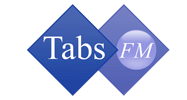Posted by Rob Whalley
Enhancing Educational Estates with CAFM Software
In today's educational landscape, effective management of facilities/estates is crucial for creating a conducive learning environment. Computer-Aided Facility Management (CAFM) software plays a vital role in streamlining operations, improving efficiency, and ensuring that educational institutions can focus on their core mission—education.
What is CAFM Software?
CAFM software is a digital tool that helps organisations manage their facilities and real estate assets. It integrates various aspects of facility management, including space planning, maintenance management (hard and soft services), property compliance, asset tracking, and reactive/helpdesk work order reporting. For educational institutions, this software can be a game-changer, allowing them to optimise their resources, demonstrate compliance, and improve operational effectiveness.
Benefits of CAFM Software in Education
- Maintenance Management: Keeping facilities in a good condition is essential for site safety and use, this includes both ‘Hard’ (maintaining M&E assets and building fabric) and ‘Soft’ maintenance (cleaning etc). CAFM software enables proactive maintenance management by tracking work orders, scheduling repairs, and managing service contracts. This ensures that issues are addressed promptly, minimising disruption to the educational process and ensures compliance with property regulations.
- Asset Tracking: Educational institutions have numerous assets, from furniture to technology equipment, but more specifically, M&E assets relating to facilities and estates such as boilers, fire doors, emergency lighting etc. CAFM software helps track these assets, ensuring they are properly maintained, accounted for and maintained to compliant standards. This can prevent loss and reduce unnecessary expenditures on replacements as well as optimising asset lifecycles.
- Improved Communication: Effective communication among staff, students, and facilities management is key to smooth operations. CAFM software often includes features that facilitate communication, such as online requests for maintenance or resource booking calendars, ensuring everyone is on the same page and working in harmony.
- Data-Driven Decision Making: With robust reporting and dashboard analytics capabilities, CAFM software provides valuable data that can inform decision-making. Administrators can analyse trends in space usage, maintenance costs, and resource allocation, enabling them to make strategic improvements.
Choosing the Right CAFM Software
When selecting CAFM software for an educational institution, consider the following factors:
- User-Friendliness: The software should be intuitive and easy to navigate for all users, including faculty, staff, and students.
- Customisation: Look for solutions that can be tailored to meet the specific needs of your institution, i.e. branding, field visibility and workflow configuration.
- Integration: Ensure that the CAFM software can integrate with existing systems, such as single sign-on (SSO), SFG20 or finance systems.
- Support and Training: Choose a provider that offers comprehensive support and training to help your team get the most out of the software.
- Experience: Ensuring that your chosen provider understands with education and has experience in delivering similar solutions. Always ask for references.
Conclusion
CAFM software presents a valuable opportunity for educational institutions to enhance their facilities management. By improving communication, using technology to replace time consuming and cost inefficient paper-based processes, utilise space, streamline maintenance processes, ensure compliance, optimise assets and enabling data-driven decision-making, these tools can significantly contribute to a better educational experience for students and staff alike.













































Follow us:
GDPR (Data Privacy)
Disclaimer
COVID-19